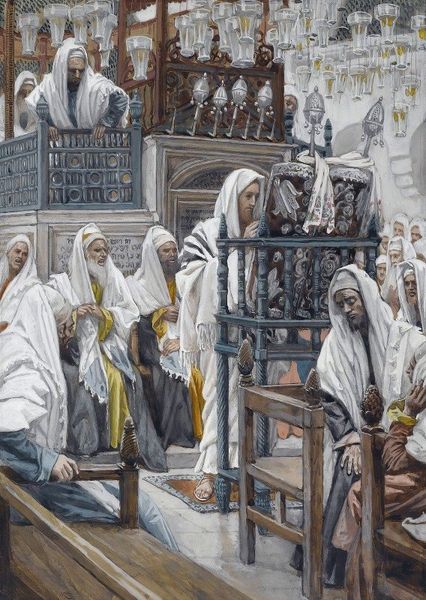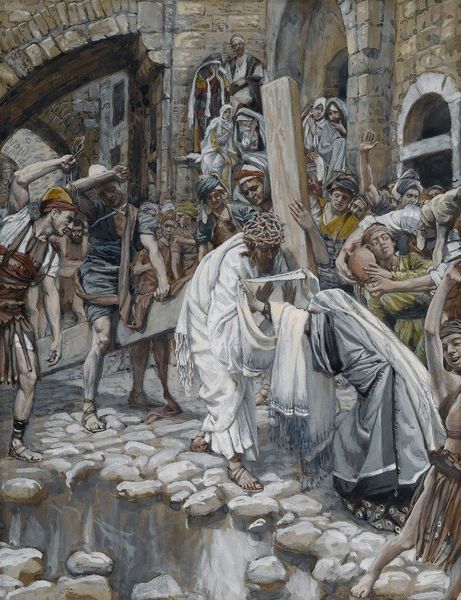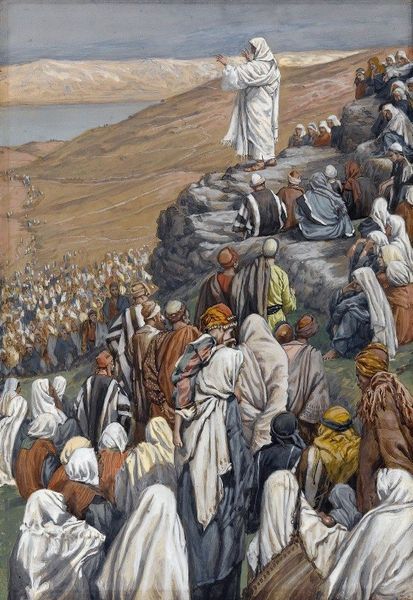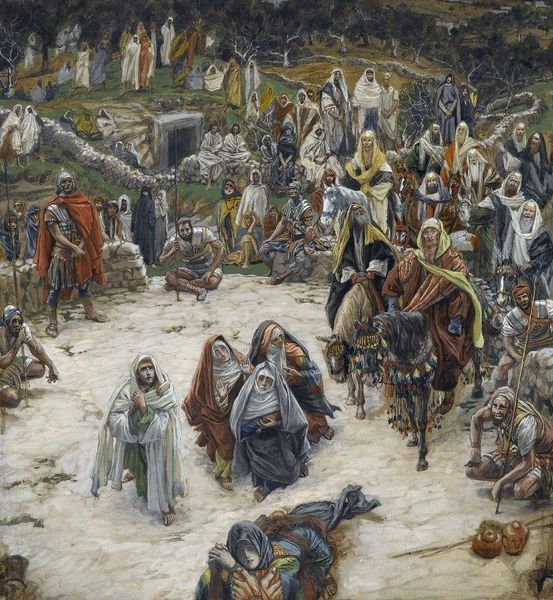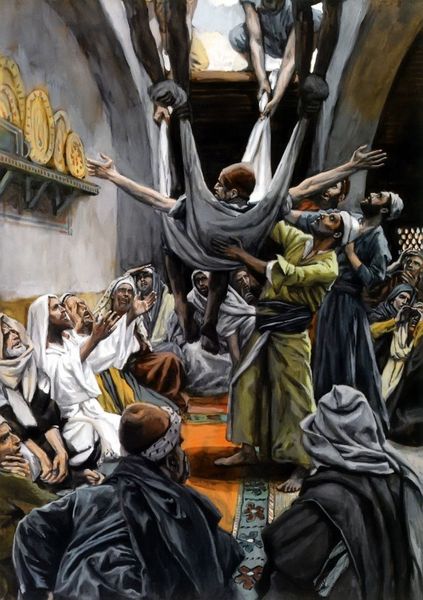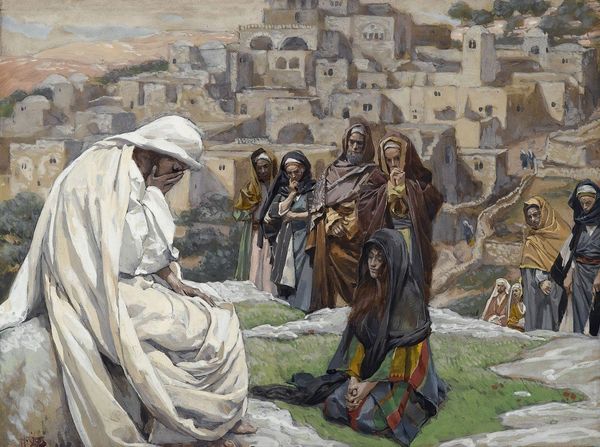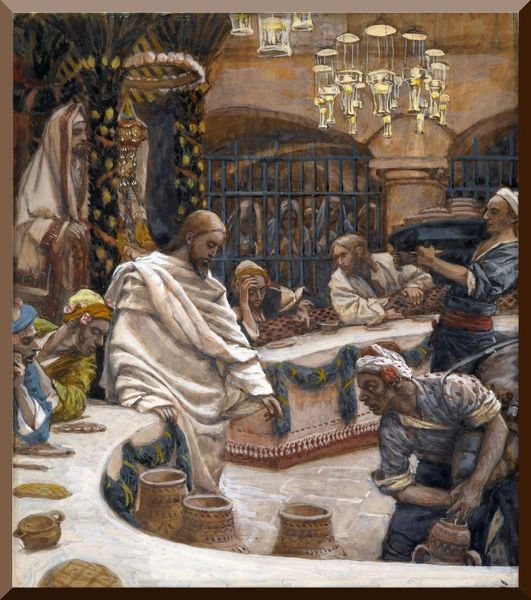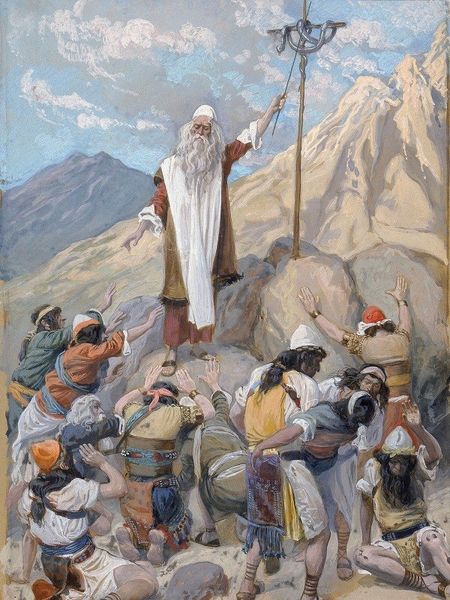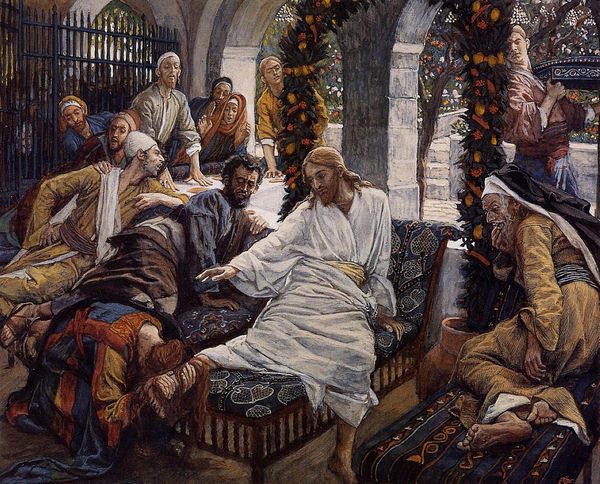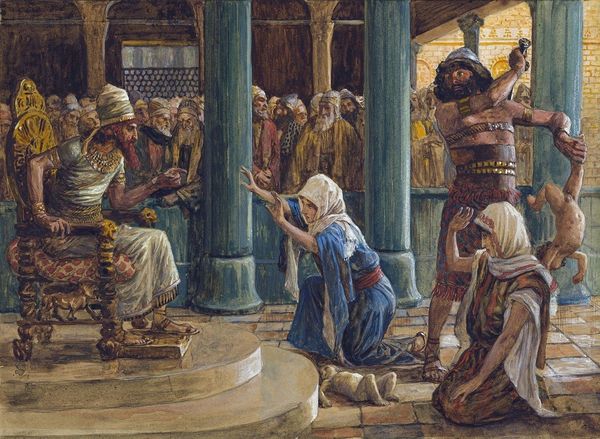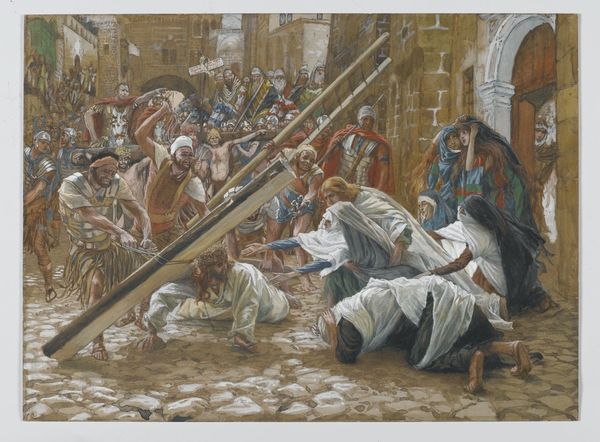
painting, oil-paint
#
narrative-art
#
painting
#
oil-paint
#
painted
#
figuration
#
oil painting
#
history-painting
#
academic-art
#
realism
Copyright: Public Domain: Artvee
James Tissot, a French painter, made this watercolor, The Procession in the Streets of Jerusalem, in the late 19th century. The image depicts Jesus entering Jerusalem, a key moment in Christian theology. Tissot presents this event not as a divine miracle but as a social phenomenon. We see a crowd of people from various social classes and backgrounds, each reacting in their own way to Jesus's arrival. Tissot's late 19th-century context is crucial. The Third Republic in France was grappling with secularism and the role of religion in public life. Tissot was part of a broad movement of artists who sought to create a more modern, historically accurate vision of biblical events. He traveled to the Middle East to research the architecture, landscape, and customs of the region. As historians, we can look at Tissot's diaries, letters, and sketches, as well as religious texts and social histories of the period, to understand the complex cultural forces that shaped his art. Ultimately, this painting's meaning is inseparable from the social and institutional context in which it was made.
Comments
No comments
Be the first to comment and join the conversation on the ultimate creative platform.

